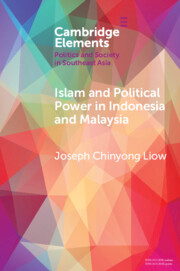Element contents
Islam and Political Power in Indonesia and Malaysia
Published online by Cambridge University Press: 15 August 2022
Summary
- Type
- Element
- Information
- Online ISBN: 9781108669047Publisher: Cambridge University PressPrint publication: 25 August 2022
References
- 6
- Cited by

